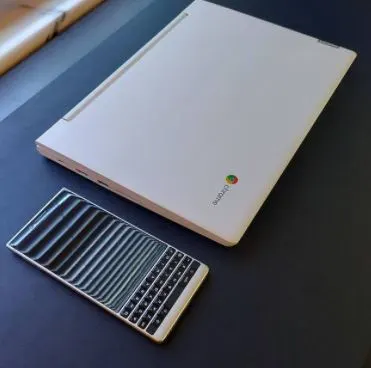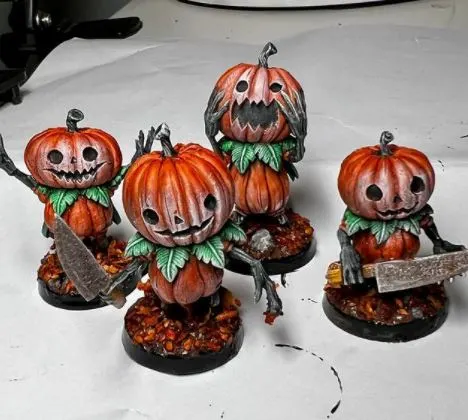Can You 3d Print With A Chromebook? Chromebooks are very popular with college students because they’re inexpensive and lightweight. They also don’t require you to install an operating system, which is great for those who want to bypass the hassle of Windows or Mac OS. However, some people may worry that Chromebooks can’t do everything a regular computer can do. It’s true that Chromebooks have limitations – but it doesn’t mean they can’t 3d print!
Related:
- Top 7 Best Dual Extruder 3d Printer Under $500
- Top 7 Best Filament For Lithophanes
- 7 Best Hairspray For 3d Printing
- Top 7 Best Direct Drive Extruder
- Top 7 Best Resin For 3d Printer
Can you 3d print with a Chromebook? Print chromebooks with tinkercad (software)
It is possible to 3D print with a Chromebook laptop by downloading slicer software like Cura. You can make your own files and slice them.
The Chrome OS is a pretty neat environment and it has come a long way. I remember using the very first Chromebooks and they were terrible (and slow). Now you can run Android apps on them. You can even do CAD on Chromebook with some programs like AutoCAD, SolidWorks, SketchUp, and more. People have been able to print from their Chromebooks for quite some time now as well. That begs the question: Can you 3d print with a Chromebook?
I own both of these items: A Dell Inspiron 13 7000 which runs Windows 10 and an Acer R13 which runs Chrome OS. I wanted to find out if I could use them both to 3d print.
Chromebook os (chromeos) setup or delete
The first thing you need to do is go to settings and turn on developer mode.
Developer mode allows you to alter the system files which don’t exist when in normal (e.g non-developer) mode. You can also install different OSs like GalliumOS or Ubuntu. If your Chromebook came with manufacturer-made custom firmware, you will not be able to follow this guide without reflashing your device. Not recommended for novices!
Next up after enabling Developer Mode was installing Crouton – This is a program that lets me run Linux within Chrome OS so I can use tools like Repetier Host and Cura which are cross-platform applications but not available for Chrome OS. All great so far, now to 3d print from the Chromebook!
I have googled around for quite some time to find out if it’s possible. But no matter what I tried, I couldn’t get anything to work correctly. Repetier Host (chrome app) would not connect to my printer nor could I even connect via USB – It seemed like the firewall on the Chrome OS was blocking me. Cura (Linux app) simply wouldn’t start. So I had to take a different approach…
Windows 10 Setup:
Now install VirtualBox or Bochs (both free applications). Set up your Windows 10 machine inside of that virtual environment and install your preferred 3d printing software like Slic3r, KISSlicer, Cura, Repetier Host, or Simplify3D. Then attach your regular USB cable and connect to the printer. Things should start working now!
I’m still trying to figure out why I couldn’t get anything to work with the Chromebook but it seems like Repetier Host didn’t want to play nice. But everything worked smoothly on Windows 10. The only thing I don’t like about this setup is that you have one more monitor which you always need to be connected to. I guess if you are using a docking station it wouldn’t be much of an issue but since I do not it’s just another wire sticking out of my laptop. At least there are no problems when printing from the Windows OS!

Can You 3d Print With A Chromebook? (cre: reddit)
Best 3D printer for Chromebooks – Printing by ultimaker cura slicer
You are probably here because you have heard about the capabilities of 3D printing and want to get started with it. Earlier, I made the assumption that you already know what a 3D printer is, but in case you don’t know or haven’t even heard of one before, I will try to explain it briefly. 3D printers are machines similar to your regular office printer which instead of using ink to print 2D documents uses plastic thread (filament) to create real-life objects which have 3 dimensions i.e. width, length, and height!
That’s how easy it is. Unlike your office printer though, these printers are very expensive and large in size so I wouldn’t recommend you to buy them unless you plan on using it often for your personal projects like prototyping or making custom cases for your electronics gadgets.
But I am not here to talk about 3D printers, what I really want is to show you the best 3D printer for Chromebooks! As you probably already know, Chromebooks are laptops that are primarily used by students in schools all over the world because of their simplicity and nice pricing.
The reason why these 3D printers are the best option for Chromebook users is that they are UNIX-based operating systems which means that they also have access to install Virtual Machines (VMs) on them. VMs are basically environments that can run other OSes inside of them so if you want to run Windows on your Chromebook, you can easily install Windows 8.1 or even Windows 10 inside of it!
Let’s take a look at some of the best 3D printers for Chromebooks:
1) Monoprice Select Mini 3D Printers
Monoprice is very popular in the US and they make (in my opinion) some of the finest electronics and accessories out there.
They have tons of options when it comes to desktop 3D printers but I would personally recommend you to go with this printer because it is very easy to use, has a large build volume, similar interface to what you would see on an LCD screen (similar to your regular office printer) Since Chromebooks are widely used by students around the world who don’t have a lot of money in their pockets, this is the best option for them.
Specs:
- Build Volume: 125mm x 125mm x 125mm
- Weight: ~4 kg
- Filament Types Supported: ABS and PLA

Can You 3d Print With A Chromebook? (cre: astroprint)
2) Monoprice Select Mini V2
Just like the printer above, this is also made by Monoprice but instead of using the original plastic parts, this one uses metal parts instead which make its overall quality much better than its predecessor!
This one also costs a bit more but only because of the metallic enclosure which is an added benefit if you ask me because I hate printed plastic enclosures due to their poor durability. Some other features on this printer are the same as the previous one so I don’t think that there is any need to explain them again.
Specs:
- Build Volume: 125mm x 125mm x 125mm
- Weight: ~4 kg
- Filament Types Supported: ABS and PLA
3) Monoprice Maker Select Plus
This printer has a slightly larger build volume at 225x145x150 mm but other than that, its dimensions are very similar to the printers above which isn’t surprising because they all come from the same brand i.e.
Monoprice! So if you like this one too, go ahead and buy it because you probably will never find a better 3D printer for this price!
Specs:
- Build Volume: 225mm x 145mm x 150mm
- Weight: ~8.8 kg
- Filament Types Supported: ABS and PLA
Conclusion
Chromebooks are great for basic computing, but they can’t do much else. You might be able to use a 3D printer if you have one and there’s an app that will work with your Chromebook.
If you want to pursue this option further, we recommend doing research on the best printers that may work with your laptop before purchasing it. We hope our article was helpful in answering some of your questions about whether or not you could print using a Chromebook!
Further Reading:
- Top 7 Best 3d Printer For Board Games
- Top 7 Best Creality 3d Printers
- 7 Best Filaments For Ender 3
- Top 7 Best 3d Printer For Nylon
- Top 7 Best 3D Printer For Cosplay Armor
Tags: #Suppressor #Nylon #Chromebook #Wax #Car #Game #Records #Kevlar #Hollow #Colors #Lenses #Aquarium #Tools #Biodegradable #Abs
Tags: tinkercad, prints, printing with a chromebook, how to, chromebook’s, yes, does, small preview thumbnail, photo business wire, aced tech esports, size small preview, full size small, chromebook downloading cura, printing large format, cura slicer software, ultimaker cura slicer, ago, object search, join, stl file online download post, makerbot
